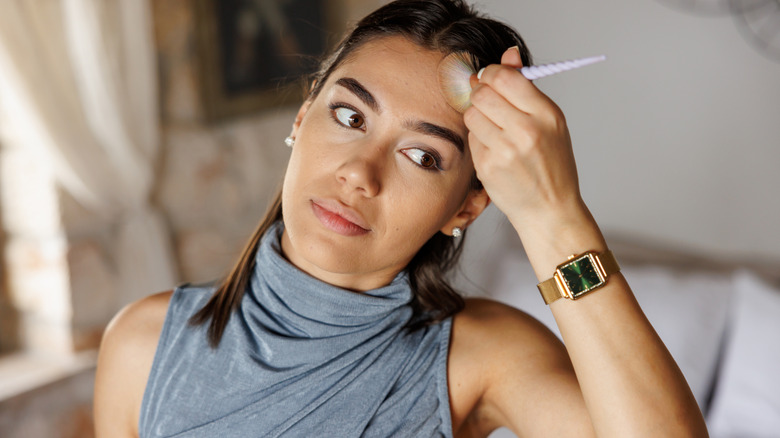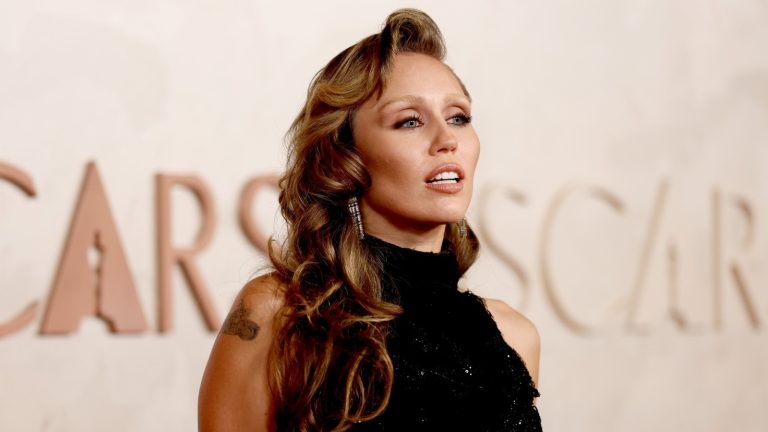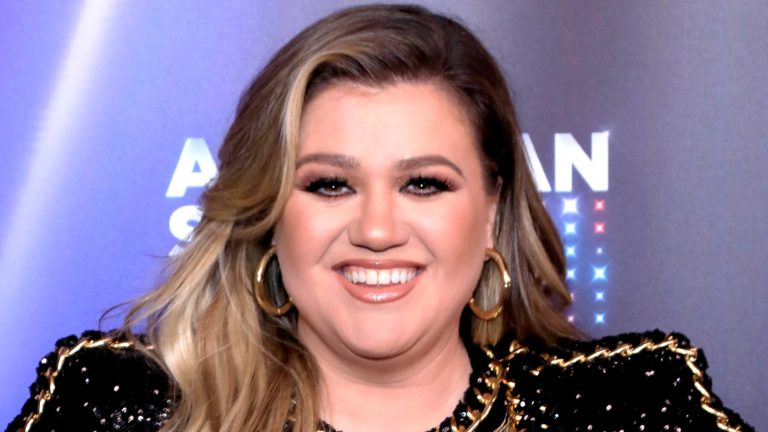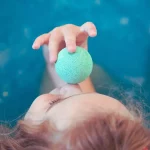Book Appointment Now
Forgetting to blend your makeup products is the ultimate blunder
When it comes to contouring for a smaller forehead, Kim Paige shares that there are a few key points where you should be applying your products. “I recommend applying contour and bronzer to your forehead, temples, and cheeks for a cohesive bronzed look!” she explains exclusively to Glam. “Itʼs all about creating the illusion of a smaller forehead through balanced, natural-looking shadows.” However, the makeup artist stresses that forgetting to blend is an error you don’t want to make.
“Blend, blend, and blend!” she advises us. Without blurring those sharp lines you’re creating with your products, you’ll simply end up looking unnatural and unfinished. Blending makeup flawlessly isn’t as hard as you think since you should have a range of tools at your disposal, including brushes, sponges, and even your fingers. Sponges work well with liquid, cream, and pressed-powder products, and a damp sponge will go a long way in leaving you with sheer, dewy coverage. However, since beauty sponges tend to absorb product, you might prefer a brush for blending, as these also work with liquid, cream, and powder. Ensure you’re blending in good light, as brushes, in particular, are prone to streaks. As far as contouring products go, the makeup artist recommends “Black Radianceʼs True Complexion Creme Contour Palette for the ultimate sculpted look, in shades Light to Medium or Medium to Dark!”
It’s a major mistake to ignore your face shape
The final mistake that Kim Paige warns against is ignoring your face shape. You’ll need to take into consideration your particular dimensions; otherwise, your attempts to contour your way to a smaller forehead may fall flat. “For example, heart face shapes, which naturally have a wider forehead, are prone to further accentuating the area by putting too much concealer or highlighter in the forehead portion of the T-zone,” she says in our exclusive chat. “Pear face shapes, on the other hand, are characterized by a narrower forehead and are prone to making their overall face shape appear smaller, by over-applying contour or bronzer around the hairline.”
There are a few steps you can take to determine your face shape once and for all. First, familiarize yourself with the different face shapes; the main shapes are oval, square, round, heart, diamond, and rectangle, though you can also get variations of these. You’ll want to grab a tape measure and note the figures for the overall face length, as well as the cheekbones, jawline, and of course, the forehead. Then, simply match your dimensions to the corresponding shape. For example, hearts are going to be the narrowest in the chin and have wider cheeks, while round faces are going to have a shorter overall length. Once you’ve figured out your face shape, you’ll have a better understanding of how creating shadows and highlights in different areas will best complement your forehead.









